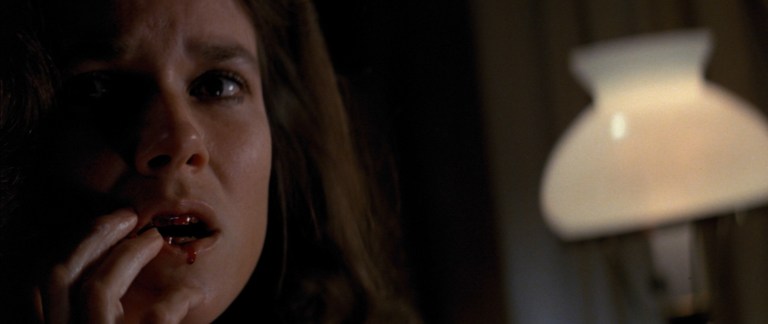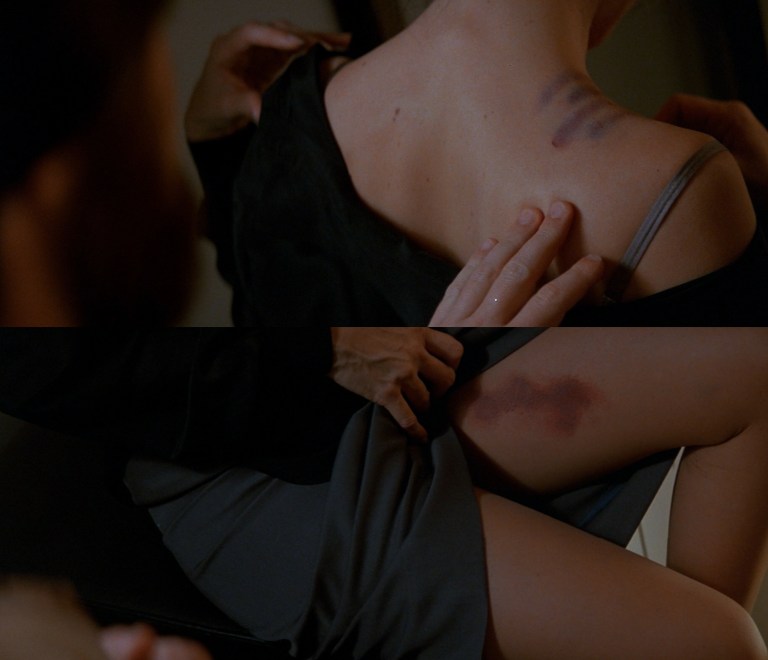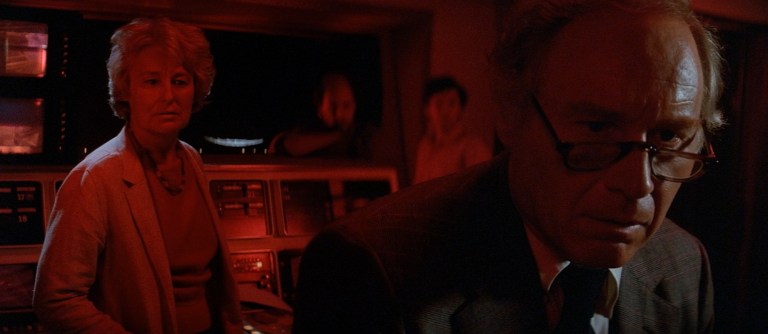Is ‘The Entity’ (1982) Based on a True Story?
According to Martin Scorsese, it’s the fourth scariest movie of all time.

One of the most upsetting and mysterious “based on a true story” horror movies of all time is the 1982 supernatural horror movie The Entity, starring Barbara Hershey as a single mother terrorized by an unseen entity. The Entity is based on the true story of a woman named Doris Bither.
In The Entity, Hershey plays Carla Moran, a hard-working single mother living in Los Angeles with her three children. When invisible entities start attacking her, she flees to her friend Cindy’s (Margaret Blye) home and eventually seeks the help of Dr. Sneiderman (Ron Silver), a psychiatrist who believes Carla’s injuries are self-inflicted. Sneiderman refers to the rape Carla experiences at the hands of a poltergeist she cannot see as “spectral rape,” a phenomenon some psychiatrists even consider a paraphilia, similar to a fetish. A particularly gutting moment in the film occurs when a female psychiatrist asks Carla whether she feels it would reflect poorly on her as a woman if the entity left her, as if it were a bad breakup.

Carla confides in Dr. Sneiderman that she was raped and abused as a child, that she experienced a high-risk pregnancy, and that her first husband died violently. When Sneiderman leaves, she is again attacked by the unseen entity in front of her children. When her son tries to protect her, he breaks his wrist. Not only did the actor playing her son really break his arm filming this scene, but it mirrors a real-life incident in which Doris Bither’s actual son broke his arm protecting his mother from her assailant. The next day, Dr. Sneiderman shares with his staff that he believes the problems in Carla’s household stem from the fact that Carla masturbates. When Carla refuses to abandon her children and enter a mental hospital, the doctor implies she has incestuous feelings for her children.

At a bookstore, Carla overhears two parapsychologists talking and tells them about the incubus activity in her home. They visit her home, witness activity with their own eyes, and set up a study with their supervisor Dr. Elizabeth Cooley (Jacqueline Brookes). The team creates an elaborate trap for the entity while Dr. Sneiderman weirdly continues to hang out and tell Carla she is making it all up. The experiment fails, though Dr. Sneiderman finally witnesses the entity attacking Carla. Another doctor involved in the experiment, Dr. Weber, refuses to admit what he saw with his own eyes.

It’s this expensive, high-tech finale that is complete fiction. No attempt to “trap” Doris’s entity was ever made. The enduring horror of The Entity is that Barbara Hershey’s Carla and the real-life Doris were unable to escape from evil. Calling on white science for help leaves Carla worse off than if she had simply ignored the problem altogether. The doctors who are supposed to help her tell her she is making it up, call her perverted, tell her she is abusing her son—and then when faced with objective evidence of the malevolent entity, simply refuse to acknowledge or speak about what they have seen. When Carla returns home, the entity greets her saying, “Welcome home, cunt.” Carla moves her family to Texas, where they continue to be terrorized. In real life, Doris Bither and her family continued to be tormented by their entity while The Entity was in theaters.

Although it is based on a real ghost story, The Entity is often read as an allegory for victims of abuse and their struggle to be believed. Dr. Sneiderman’s interviews with Carla mirror interviews with rape and abuse victims. When Carla admits that during one attack she had an orgasm, the doctor blames the abuse on Carla herself, saying she has a “repressed need for abuse.” Carla is so sick at this point, she has no perspective or resolve left to fight him.
The Entity, which claims to be based on a true story, is one of the few possession films that ends with White Science and Black Magic in a draw.
Carol J. Clover, Men, Women and Chain Saws
There are other parallels between what happens to Carla and what happens to other abused women; for instance, Carla feels pressure to keep her abuse a secret. Even though her abuser is an inhuman entity, Carla is still capable of forming a trauma bond with it. This happens because, as Kier-La Janisse notes in her horror-movie memoir House of Psychotic Women, “the abuse only strengthens the ties between the abused and her abuser, because it is a shameful secret that is shared between them.”

Like many people who have been faced with the reality that someone they know is an abuser, Dr. Weber simply agrees to disagree. He will not advocate for Carla. He will not endanger his own standing in the scientific community by saying something controversial. He will remain silent, no matter the personal cost to Carla and her family.
In 1974, two UCLA parapsychologists, Dr. Kerry Gaynor and Dr. Barry Taff, were at a local bookstore when they were approached by a woman named Doris Bither who told them that she was being troubled by three violent entities—two who would hold her down while the third raped her. Bither’s friends corroborated her account. The parapsychologists decided to look into the haunting.

At the time Doris was being interviewed, she and her children were illegally living in a condemned home in Los Angeles. Many of the character elements from the film came from Bither’s real life: She was raised by alcoholic parents and had many traumatic childhood experiences. She was abused and disowned as a teenager. As a result, Doris struggled with addiction in adulthood. She had also been assaulted by various men in her life. She was struggling to keep her family together.
The whole rape thing was real. My room was right next door to my mother’s. I would hear the attacks happening. Things being thrown, her screaming. Then she would come out of the bedroom and have all these bruises. On her legs, her inner thighs. Just like in the movie.
Brian Harris, An interview with Doris Bither’s son
The doctors saw evidence of beatings themselves and even photographed strange light formations in the Bither house that appeared in Popular Photography magazine, the only alleged ghost photo they’d ever published.

The parapsychologists became technical advisors for The Entity film, though they said director Sidney J. Furie thought they were “drugged-out wackos.” Frank De Felitta wrote a novel and then a screenplay based on Doris Bither’s experiences, and Furie was brought on to direct. Furie decided that neither he nor Barbara Hershey would meet with Bither because he did not want to “judge the characters.” Furie did not even want to make a horror film; he calls The Entity “suspense.” By all accounts, none of Doris Bither’s interactions with doctors or scientists actually lessened the poltergeist activity. She was afflicted until her death in 1999. It’s unlikely that she was paid for the use of her life story by either Frank De Felitta or Sidney J. Furie.

